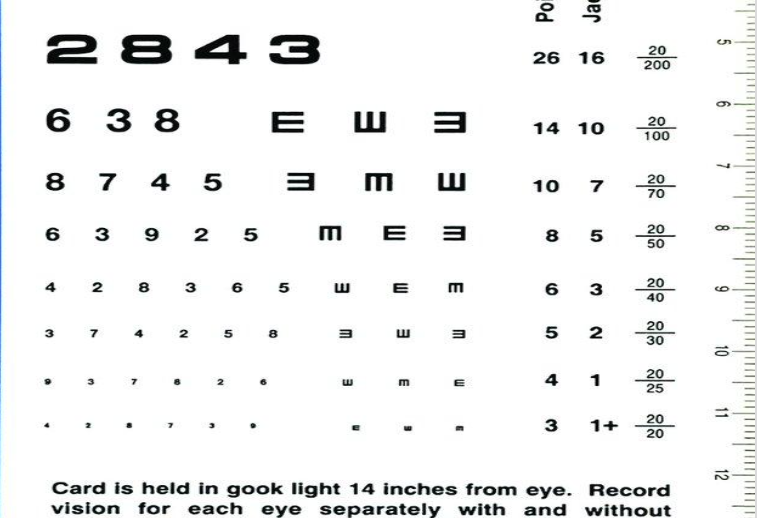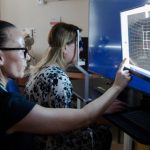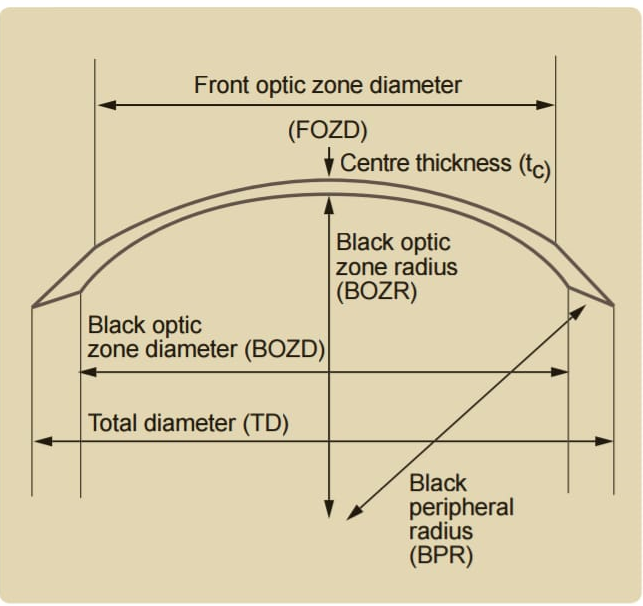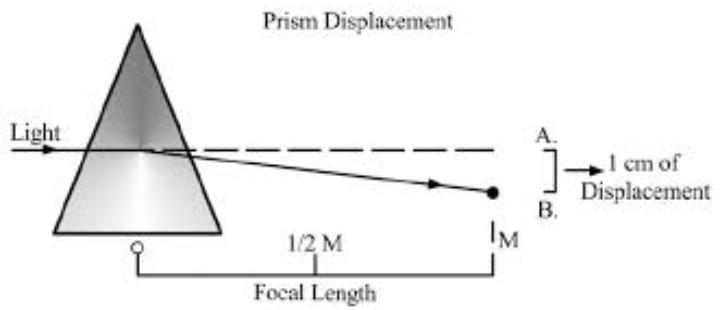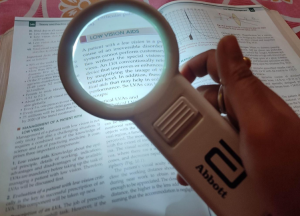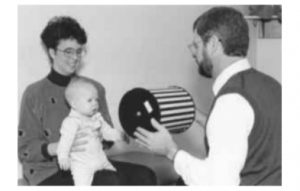A person with low vision is one who has impairment of visual functioning even after treatment and/or standard refractive correction, and has a visual acuity of less than 6/18 to light perception, or a visual field of less than 10 degree from the point of fixation, but who uses, or is potentially able to use, vision for planning and/or execution of a task.
- PURPOSE OF LOW VISION ASSESSMENT:-
- The purpose of low vision assessment is to assess the residual, present vision & correlate it with the individuals social, educational, vocational & other needs & to identify ways & means to enhance the residual visual functions.
- Low vision assessment is a result oriented procedure, at the conclusion of which the examiner should have a clear perspective of what needs to be done.
- THE ASSESSMENT OF FUNCTIONAL VISION AIMS TO DETERMIN:-
- What people see.
- How they can see and use their vision.
- Under what condition they can see.
- To provide information about the use of vision to plan training to enhance visual skills.
- PARAMETERS OF FUNCTIONAL ASSESSMENT OF LOW VISION :-
- VISUAL ACUITY ASSESSMENT.
- VISUAL FIELD ASSESSMENT.
- CONTRAST SENSITIVITY ASSESSMENT.
- COLOUR VISION ASSESSMENT.
- GLARE SENSITIVITY ASSESSMENT.
- FUNCTIONAL ASSESSMENT OF LOW VISION:-
- VISUAL ACUITY:-
The visual acuity assessment begins with determining the distance acuity of the patient. The procedure involves showing the patient large size numbers on sheets from a particular distance and asking him or her to identify them. Optotypes, single-letter chart gratings and crowded letters of different sizes may be shown to the patient alternatively. The same procedure is repeated for each eye individually also.
- Traditional methods of testing acuity are not practical for low vision patients.
- Vision charts designed for low vision are hand held or movable rather than fixed or projected. Each line contains several characters so memorization is less likely
- ETDRS charts are recommended for more accurate recording.
- Patient feel more confident when they are able to read more letters and the start of low vision is with a positive note.
- The hand held charts avoids glare, give better contrast and can be moved closer so that letter size is doubled.
- Changing testing distance requires recalculation of acuity.
- Record acuity with the actual testing distance in the numerator and optotype size in denominator.
- All patients should be examined first in daylight condition
- Special charts with grey background should be used in patients with glare problems
10.Bailey & Lovie chart are the logarithmic scale. Main advantage of chart is that it’s near vision equivalent; greatly simplify the process of calculating the estimated magnification required by a patient.
11.Log MAR chart – ETDRS uses Sloan optotype. Essentially it is same design as Bailey Lovie charts but differ in actual letters used.
- LOW CONTRAST VISUAL ACUITY:-
- The vast majority of our visual interaction with the world involves resolving low contrast details. Variation in contrast in everyday tasks is undertaken by all patients.
- Bailey – Lovie low contrast chart, Pelli Robson charts; symbol charts – Lea’s symbol charts, hiding Heidi charts with smiling faces to measure low contrast acuity.
- When optotype based letter charts are used for assessing contrast sensitivity, patient should be given enough time to recognize the letters (temporal summation)
- Practical relevance of low vision contrast visual acuity is that it helps the patient for better understanding of the nature of their visual impairment.
- Patients feel relieved to see a clinical test that equates to their experience.
- NEAR ACUITY ASSESSMENT
In this step the patient identifies or reads certain typeset of a smaller size from a nearer distance. The distance is accurately recorded. The typeset size is denoted in M units. Reading acuity is the patient’s ability to read a more congested and complex typeset prints from a measured distance.
Near Vision Testing:-
- In low vision near vision is recorded as the size of print that can be read fluently and easily.
- Perform near vision at two distance allow the patient to read at his/her preferred distance.
Measure the distance.
- Secondly measure functional reading ability for each eye at 40 cms.
- For both near testing situation use reading cards specifically designed for low vision.
- It is imperative to undertake near vision assessment only after having completed an accurate refraction and having determined optimal distance vision, low contrast vision, contrast sensitivity measurements.
- Use M system along with testing distance for recording visual acuity. Discrepancy of more than two M units between the two eyes when tested at same distance, in this case better Seeing Eye alone can be corrected by low vision aids.
- Record near acuity as fraction – The reading distance in cms is the numerator. The print size in M units is denominator eg. 40/4M.
- Use single character visual acuity.
- Evaluate word recognition abilities.
10.Measure continuous text visual acuity. Graded continuous text materials will provide a more accurate measure of reading ability than single optotype measures and are recommended for evaluation of performance with reading devices.
11.Assess effects of illumination.
12.Use appropriate vision charts (Lighthouse near acuity chart, near ETDRS chart, LVRC , Sloan ‘ M’ series charts – These are calibrated in meter equivalents (M units); and these simplify calculation of magnification.
13.Final determination and prescription of a low vision device should be based on performance (i.e., reading actual printed materials such as newspapers and labels, not printed acuity charts).
- VISUAL FIELDS ASSESSMENT:-
Visual Field testing is an important diagnostic and screening tool for patients with Glaucoma,Retinitis Pigmentosa, and many neurologic disease, to determine the presence of any functional field loss.Confrontation test is the most commonly screening test done to evaluate the peripheral visual fieldlosses in different quadrants .The examiner compares the examinee’s visual fields with
his or her own visual field size. Bernell’s perimetry , Goldmann Test and Tangent screen are often
more accurate is indicated when a more accurate evaluation of visual field is required. ?
The visual field test ?helps to evaluate central scotoma’s?Mid, long and peripheral constrictions
Importance for orientation mobility and help in searching
Humphery Visual field if possible can be performed, would also be a valuable assessment tool.
- Confrontation Test (peripheral visual field)
- Tangent Screen Test
- Amsler grid testing(central visual field)
- CONTRAST SENSITIVITY ASSESSMENT:-
Sensitivity to contrast is the ability of the eye to perceive the smallest difference in luminance and thus to appreciate the niceties of shading and slightest nuances of brightness which are decisive for the forms and shapes. In order to measure contrast sensitivity, a procedure is used in which the subject compares the luminance of standardized target with its surroundings.
Many tests are available to measure contrast sensitivity functions and the result can be quantified in a contrast sensitivity curve or simply by qualifying the loss as mild, moderate and severe. Lea’s contrast test, Pelli Robson chart provides a good way to measure contrast sensitivity. Contrast testing is important to find:-
- Need for Magnification
- Ability to use Optical Devices
- Lighting (Functional Adaptive Device)
- Dominant Eye
- Overall Function-contrast enhancing techniques
- COLOR VISION ASSESSMENT:-
Colour vision anomalies, which can significantly affect educational, vocational, daily living, and mobility needs, can be diagnostic of specific diseases. Some colour vision tests e.g., Holmgren wool, D15 panel test, Ishihara’s test can help assess the functional implications of color vision loss.
GLARE SENSITIVITY ASSESSMENT:-
- Glare is the reduction of visual function caused by the scattering of incoming light.
- Clear ocular media is required for clear image on the retina.
- Glare may be caused by the opacification of the ocular media.
- Glare testing is an objective means of quantifying the deleterious effects of light scatter on visual performances.
Glare is result of excessive brightness within visual field. It is defined as discomfort/disability glare. Glare is more prevalent in individuals with visual impairment in case of cataract, corneal scarring, and albinism.
It can assessed in simplest form by introducing a pen torch/light from an angle into the visual field close to line of fixation the subject undertake a visual task. Instrument designed specifically to assist with the qualifications of disability and discomfort glare is the BAT (brightness acuity tester)
In certain conditions, glare can significantly reduce the visual acuity of the client. Sensitivity to glare should become obvious during the interview and it can actually be assessed by taking visual acuity after exposing the client to the glare source and noting the reduction in vision. If the vision reduces by more than a factor of 1.5, some type of absorptive filter lenses may be indicated. As the BAT test is not available trail of filters lenses is given on trial and error basis and the most effective filter is recommended.
Importance of Glare Testing:-
To choose proper levels of illumination required for different tasks and preferred non optical ?devices like tinted lenses/poloroids or peaked caps. ( E.g.. Reading.)
- Tinted Lenses/poloroids
- Peaked Cap
- AREAS & SKILLS COVERED IN FUNCTIONAL VISION:-
Visual Skills used for functional Vision follows the sequence of normal visual development. These visual skills are used to carry out every day activities.The assessment of functional vision has been based on the Low Vision kit.
The seven areas of skills to be assessed are:
- Awareness and attention to objects:-
Finding an object or target and looking at it (fixating) long enough to be aware of it or recognize it. Importance of assessment: Can a person see objects close to them? Does the person search for objects visually or with their hands? What makes objects easier or possible to be seen?
Factors that affect how easy an object is to find or recognize are:
- size
- distance
- contrast
- familiarity (makes it easier to recognize)
- Control of eye movements – Tracking:-
Being able to follow moving objects with the eyes or head movement. Reason for assessment: Can the person follow the movement of objects without “losing” where they have gone?
Different directions of movements should be tested:
- up and down
- side to side
- diagonal and near to far
- Control of eye movements – Scanning:-
Accurately moving eyes and shifting his/her from one object to another.
Reason for assessment: Some people with low vision have to search around for a long time to find objects, and others may find it difficult to change from looking at near objects to look for something further away.
- Discrimination of objects:-
Recognizing objects from an outline or general shape.
Reason for assessment: To learn if a person can discriminate between people and objects
recognize familiar objects, recognize different or similar objects. Objects can be discriminated because of their colour, shape, contrast with the back ground, position or size, its distance, the type of object, how familiar it is, and whether the object is moving or still etc. Good scanning and discrimination skill is needed to discriminate an object.
- Discrimination of details to identify actions and match objects:-
The discrimination of detail to identify an object is more difficult than seeing the object. Features of the object have to be identified.
Reason for assessment: Most learning occurs from visual awareness and imitation. It is important to know what can be seen and how the environment (such as lighting) affects what can be seen. The factors of distance, size, colour and contrast are very important.
- Discrimination of details in picture:-
Pictures can be simple outlines or complex, detailed pictures. The important features (parts) in pictures have to be identified so that the meaning of the picture can be understood.
Reason for assessment: Pictures give useful information on posters, advertisements or in books. Objects in pictures may be difficult to find and recognize.
- Identification and perception of patterns, numbers and words:-
Matching letters and numbers by their similarity or their differences; this does not require reading but is a necessary skill for reading.
Reason for assessment: To find out if a person can discriminate between similar and different shapes and letters. The results will help in making decisions on whether a person should use normal size print, large print, low vision devices or needs Braille.

